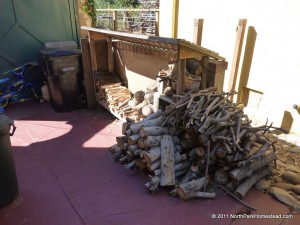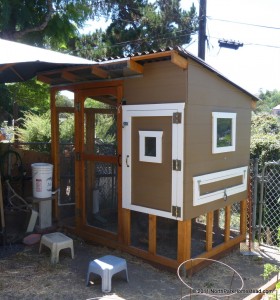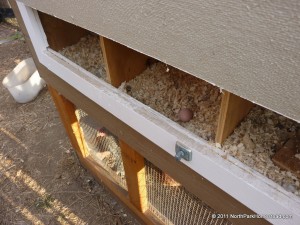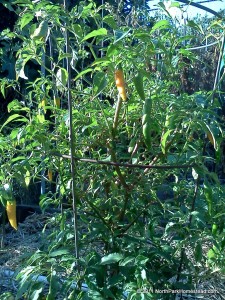 There’s lots of buzz these days about ‘locavores’, and some people have begun to think about ‘food miles’. But what about ‘heat miles’? Where does your heating fuel come from. Our primary source of heat is natural gas, and while I have no idea where that is sourced from, I’d seriously doubt it comes from anywhere nearby. But the fuel for our supplemental heat does. About 2 years ago we got a Jotul wood stove that sits on our hearth. That little stove (the Nordic QT) really cranks out the heat. This year it will be burning local wood.
There’s lots of buzz these days about ‘locavores’, and some people have begun to think about ‘food miles’. But what about ‘heat miles’? Where does your heating fuel come from. Our primary source of heat is natural gas, and while I have no idea where that is sourced from, I’d seriously doubt it comes from anywhere nearby. But the fuel for our supplemental heat does. About 2 years ago we got a Jotul wood stove that sits on our hearth. That little stove (the Nordic QT) really cranks out the heat. This year it will be burning local wood.
A friend recently offered up some seasoned oak from his property. (Thanks, Bill!) I thought, great – but I’d better get the wood I already have cut, split and stacked, before I go get more wood. We don’t have very much storage around here for extra piles of wood. The wood that was already piled in the driveway was from 2 places, both on our block. Our next-door neighbor had ‘pruned’ his mature jacaranda tree last year and I salvaged as much as I could handle from that. We still had quite a bit piled up, seasoning. And then this year another neighbor across the street cut down a tree and offered some of the wood to us.
All that wood had been sitting there, waiting to be cut to size to fit in our little wood stove. The Jotul F-100 can accommodate wood up to 16 inches long, and I usually cut it a bit shorter than that. I don’t want to remove a smoldering log that didn’t quite fit in, carry it across the living room and out the front door. Better safe than sorry.
 Although there’s something really appealing to me about the idea of splitting wood by swinging a big wedge, I’m pretty sure I would never do it often enough to get good at it. I’m more interested in chopping wood than my leg, so instead I use a smart splitter.
Although there’s something really appealing to me about the idea of splitting wood by swinging a big wedge, I’m pretty sure I would never do it often enough to get good at it. I’m more interested in chopping wood than my leg, so instead I use a smart splitter. You can see it in this photo just to the left of the wood crib. It’s safe. I get my workout, and it gets the job done. First, I use my
alligator loppers to cut the wood to length, then I split it if it seems too big or too wet. I think it seasons faster and ignites better in smaller pieces.
 It’s deeply satisfying to walk past the wood pile now – so tidy and ready to go. Of course, recently we’ve had a Santa Ana blowing through with temps in the 80’s. The fires will have to wait. Crunchy Chicken recently kicked off the Freeze Yer Buns Challenge 2011, so I guess I’m not the only one getting ready for the colder months. What are your plans for staying warm this winter?
It’s deeply satisfying to walk past the wood pile now – so tidy and ready to go. Of course, recently we’ve had a Santa Ana blowing through with temps in the 80’s. The fires will have to wait. Crunchy Chicken recently kicked off the Freeze Yer Buns Challenge 2011, so I guess I’m not the only one getting ready for the colder months. What are your plans for staying warm this winter?













